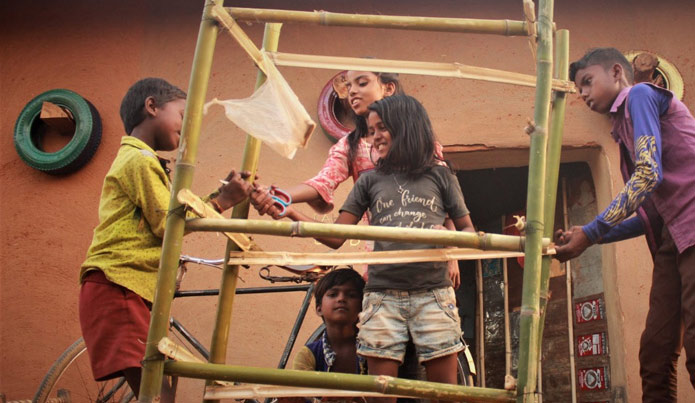Best of both worlds

Twelve-year-old Premlal and his friends spend hours every day in the paddy fields of their village Bhinjain, in southern Bihar’s Chakai block. It’s the monsoon season and to entertain themselves, the children catch fish using an age-old technique of blocking water in paddy fields by putting up barriers. The water is then drained out, leaving behind large puddles—and since fish reach the fields with rainwater during the monsoons, children can easily catch them.
This technique is common in the Santhal community that Premlal is a part of. Santhals are a Scheduled Tribe largely concentrated in Jharkhand, Bihar, Tripura, Odisha, and West Bengal.
In another Santhal village, Govindpur, Santhal youth are volunteering to teach children in their indigenous language (Santhali) to help them better relate to subjects taught in government schools. In addition to academics, the lessons taught will also help keep alive traditional practices such as fish-catching in the monsoons.
These youth volunteers are part of the Lahanti Club, set up in 25 villages in Jamui district, Bihar, to preserve the rich knowledge, culture, and language of the Santhals. Lahanti means ‘progressive’ in Santhali. With 23 Santhal youth volunteering as teachers, almost a thousand students now learn in classes held six days a week. Children are taught the school syllabus, along with Santhali language and culture. The volunteers have created a Santhali varnamala (alphabet) and a dictionary of Santhali to Hindi and English. They are also making Santhali versions of Hindi textbooks. Kavita Marandi, 17, who has been associated with the Lahanti Club for the last two years, says, “When I was in school, I wished I could answer like other children who were quick learners. But language was a barrier.”

